Welcome to our comprehensive guide on caring for and breeding the enchanting Strawberry Finch. Whether you’re a new owner or a seasoned bird enthusiast, this article will provide you with valuable insights into the care requirements and fascinating behaviors of these vibrant avian companions.
Key Takeaways:
- Strawberry Finches are captivating birds known for their vibrant colors and unique behaviors.
- Creating a suitable habitat is crucial for the health and well-being of Strawberry Finches.
- Proper nutrition, grooming, and maintaining a clean living space are essential for their care.
- They have interesting facts and behaviors that make them a joy to observe and interact with.
- If you’re interested in breeding Strawberry Finches, this guide will provide you with essential information to ensure success.

Understanding the Strawberry Finch
Before delving into care and breeding, it’s essential to understand the behavior and appearance of the Strawberry Finch. These charming birds are known for their captivating colors and unique behavioral traits that make them a popular choice among bird enthusiasts.
The Strawberry Finch, scientifically known as the Amandava amandava, is native to Asia, particularly India and Sri Lanka. They are small, pint-sized birds that boast a delightful combination of vibrant colors. The males, also called cocks, sport a stunning mix of red, pink, and white on their upper parts, while their lower parts showcase a beautiful shade of black. In contrast, the females, known as hens, have a more subdued coloration with a primarily brown and gray plumage.
Aside from their vibrant colors, the Strawberry Finches are also known for their lively and active behavior. They are highly sociable birds and prefer to live in small flocks. Their playful nature involves frequent hopping, flying, and exploring their surroundings with great curiosity. These birds are also known for their melodious and pleasant singing, adding a delightful ambiance to any bird enthusiast’s home.
Fun Fact: Did you know that the vibrant red coloration of the male Strawberry Finch intensifies during the breeding season? It serves as a key component in attracting potential mates.
Strawberry Finches are delightful avian companions that bring joy and beauty to any bird lover’s life. Their captivating colors and lively behavior make them a fascinating addition to aviaries and households alike.
Creating the Perfect Habitat for Strawberry Finches
Providing a suitable habitat is crucial for the health and well-being of your Strawberry Finch. By creating an environment that mimics their natural habitat, you can ensure they thrive physically and mentally. Take into consideration the following key elements when setting up their habitat:
- Cage Size: Choose a spacious cage that allows your Strawberry Finch to fly, stretch its wings, and engage in natural behaviors. A minimum cage size of 24x18x18 inches is recommended to provide adequate space.
- Perches: Offer a variety of perches with different diameters to help exercise their feet and prevent foot problems. Natural branches provide a textured surface and can be a great addition to their cage.
- Environmental Enrichment: Strawberry Finches are active and curious birds. Provide them with toys, such as bells, swings, and puzzles, to keep them mentally stimulated and entertained. Rotate the toys regularly to prevent boredom.
- Temperature and Lighting: Maintain a comfortable temperature range of 65-75°F (18-24°C) and provide appropriate lighting, mimicking natural daylight. Avoid placing their cage in direct sunlight, as it can cause overheating.
- Nesting Area: Offer a suitable nesting area with nesting materials, such as soft grass, coconut fiber, or nesting boxes. This will encourage natural behaviors and provide a safe space for breeding.
Remember to clean the cage regularly to ensure a hygienic environment for your Strawberry Finches. A clean habitat helps reduce the risk of diseases and promotes better overall health and well-being.
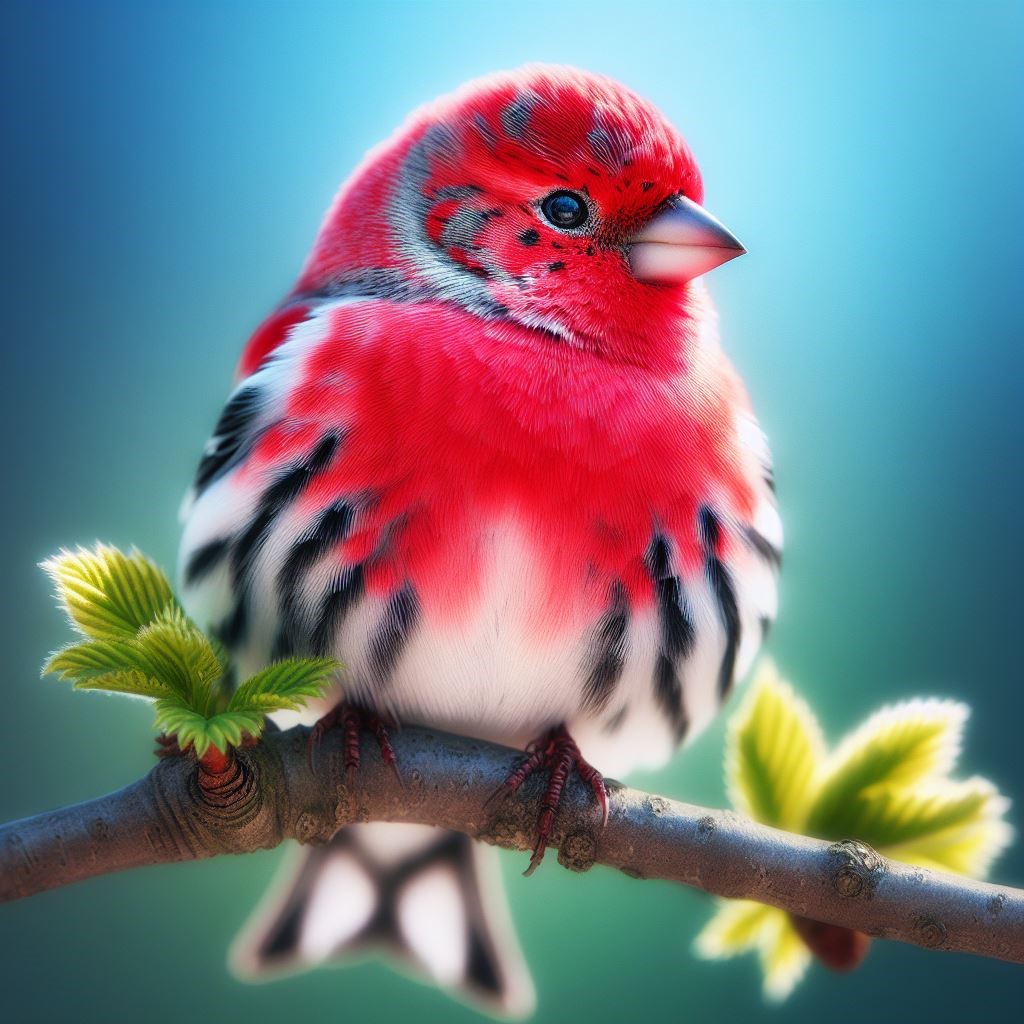
Essential Care Tips for Strawberry Finches
Proper care is essential for ensuring the health and well-being of your Strawberry Finch. From nutrition to grooming, here are some essential tips to help you provide the best care for your feathered friend:
- Nutrition: A balanced diet is crucial for the overall health of Strawberry Finches. Their diet should consist of a variety of seeds, fruits, and vegetables. Offer a high-quality seed mix specifically formulated for finches, and supplement it with fresh fruits and vegetables such as apples, grapes, carrots, and leafy greens. Avoid feeding them avocado, chocolate, caffeine, and other toxic foods.
- Grooming: Proper grooming is necessary to keep your Strawberry Finch’s feathers in good condition. Offer a shallow dish with clean water for your bird to bathe in. Additionally, provide a cuttlebone or mineral block for them to keep their beak and nails trimmed.
- Cleaning: Cleanliness is crucial in maintaining the health of your Strawberry Finch. Regularly clean their cage, including the perches, food and water dishes, and the surrounding area. Replace the bedding or liner frequently to prevent the accumulation of waste and bacteria.
“Proper care and nutrition are key to keeping your Strawberry Finch healthy and happy.”
“By providing a varied diet, ensuring proper grooming, and maintaining a clean living space, you can create a conducive environment for your Strawberry Finch to thrive.”
Strawberry Finch Diet
Below is a sample diet plan for your Strawberry Finch:
| Food | Serving Size |
|---|---|
| Finch seed mix (fortified) | 1-2 tablespoons per day |
| Fresh fruits and vegetables (e.g., apple, grapes, carrot, leafy greens) | 1-2 tablespoons per day |
| Mineral block or cuttlebone | Available at all times |
| Clean, freshwater | Available at all times |
Remember to consistently monitor your Strawberry Finch’s diet, adjusting quantities as needed based on their individual preferences and activity levels. Provide fresh food and water daily, and remove any uneaten portions promptly to prevent spoilage.
Fascinating Facts About Strawberry Finches
Strawberry Finches, also known as Red Avadavats, are small and colorful birds native to the Indian subcontinent. These delightful creatures possess unique characteristics that make them truly fascinating.
Natural Habitat:
Strawberry Finches are typically found in the grasslands, scrublands, and agricultural areas of India, Sri Lanka, and other neighboring countries. They thrive in warm climates, making them well-adapted to tropical environments.
Lifespan:
The average lifespan of a Strawberry Finch is around 4 to 6 years when kept in captivity. However, in their natural habitat, they can live up to 8 years.
Social Nature:
Strawberry Finches are highly social birds and prefer to live in small flocks. They thrive on the companionship of their fellow finches and enjoy engaging in playful activities together.
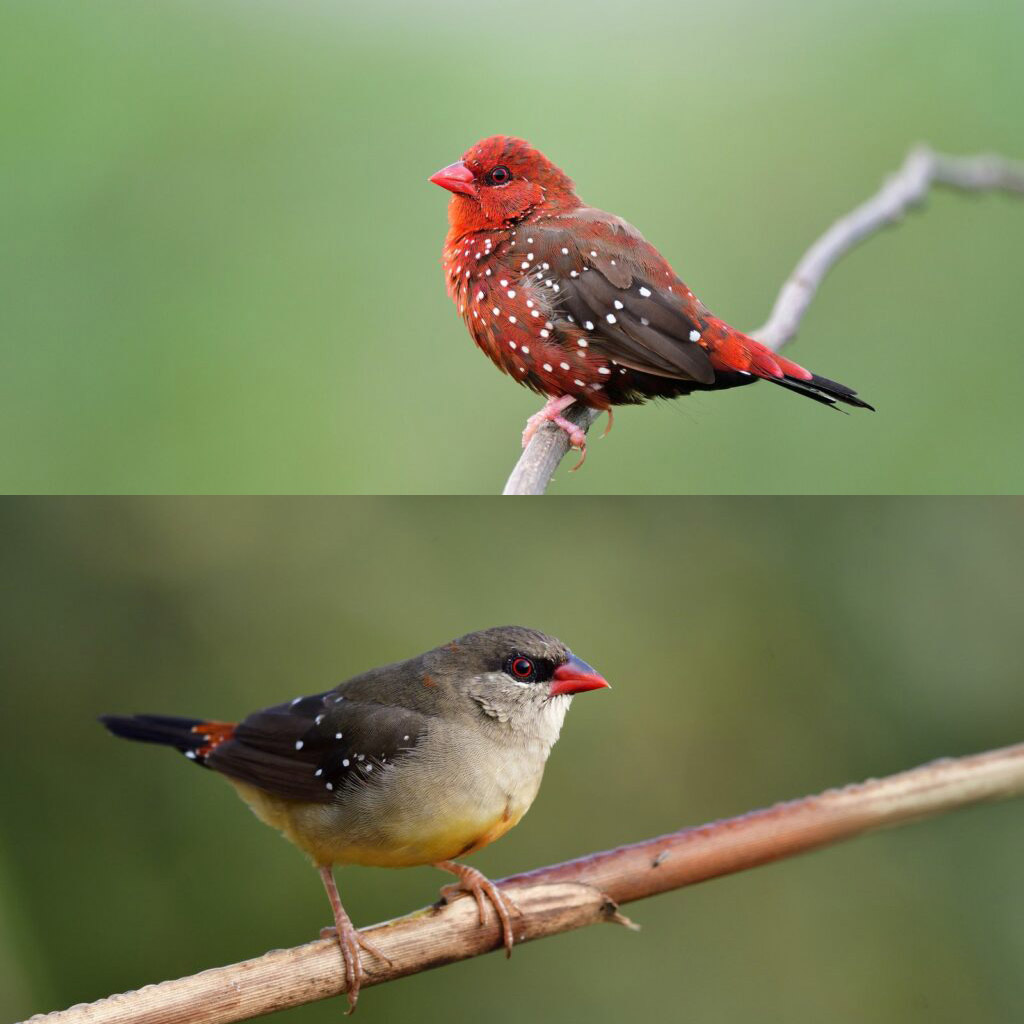
Interactions with Other Birds:
While being social butterflies, Strawberry Finches are known to establish close bonds not only with their own species but also with other small bird species. They often form mixed flocks, creating a stunning spectacle with their colorful plumage.
Unique Behaviors:
One interesting behavior of Strawberry Finches is their courtship display. Males usually puff up their feathers, sing melodious songs, and perform impressive aerial displays to attract females. Witnessing this elaborate courtship ritual is truly a sight to behold.
| Fact | Description |
|---|---|
| Species | Estrilda amandava |
| Size | About 4 inches (10 cm) in length |
| Diet | Primarily seeds, supplemented with insects and fruits |
| Colors | Males sport vibrant red plumage with black and white accents, while females have more subdued colors with a gray-brownish back and lighter underparts. |
| Flight Pattern | Strawberry Finches have a distinctive, bouncy flight with quick wingbeats. |
| Nesting | They construct cup-shaped nests using grass, leaves, and twigs, typically placed in shrubs or trees. |
These are just a few of the captivating facts about Strawberry Finches. Their stunning appearance, social nature, and interesting behaviors make them a true delight for bird enthusiasts around the world.
Breeding Strawberry Finches: A Guide for Success
If you’re interested in breeding Strawberry Finches, this section will provide you with essential information on creating the right breeding environment, understanding courtship behaviors, and caring for the eggs and hatchlings.
Creating the Ideal Breeding Environment
Creating a suitable breeding environment is crucial for successful breeding of Strawberry Finches. Here are some key factors to consider:
- Spacious Breeding Cage: Choose a cage that offers sufficient space for the finches to fly, mate, and build nests.
- Nesting Materials: Provide natural nesting materials such as dried grass, coconut fiber, and soft feathers.
- Privacy: Ensure that the breeding cage is placed in a quiet and secluded area to minimize disturbances.
- Appropriate Temperature and Humidity: Maintain a temperature between 75°F and 80°F (24°C and 27°C) with a humidity level of around 60%.
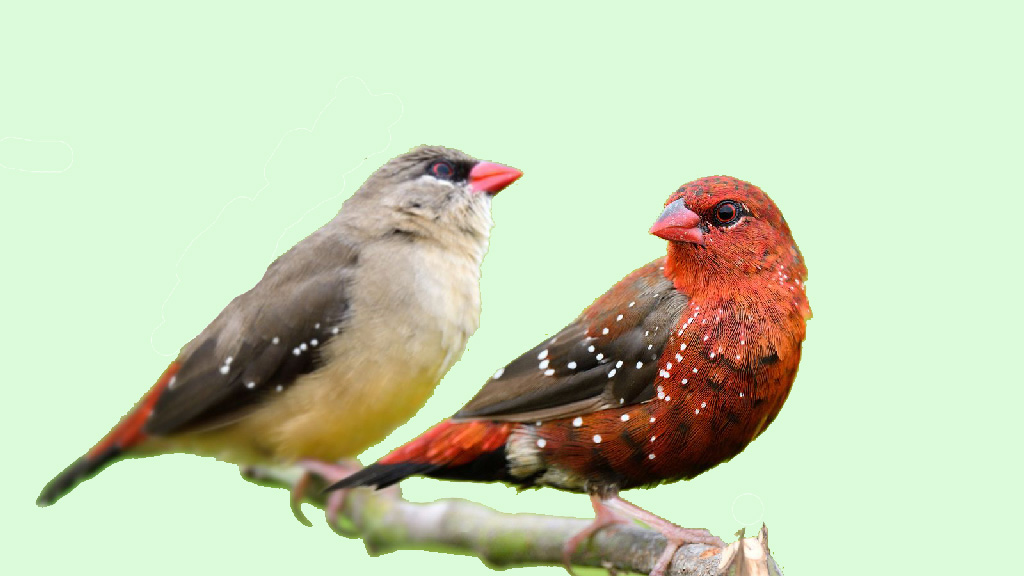
Understanding Courtship Behaviors
Strawberry Finches exhibit specific courtship behaviors during the breeding season. Knowing these behaviors can help you identify a potential breeding pair:
- Song and Dance: Male finches will sing and perform intricate dances to attract female mates.
- Displaying Vibrant Colors: Male finches showcase their vibrant red plumage to impress females.
- Building Nests: The male finch will gather nesting materials and present them to the female for nest construction.
Caring for the Eggs and Hatchlings
Once the breeding pair has successfully mated and laid eggs, it’s essential to provide proper care for the eggs and hatchlings:
- Incubation: The female finch will incubate the eggs, which typically hatch after 12-14 days.
- Nutrition: Provide a balanced diet of high-quality seeds, fresh fruits, and vegetables to ensure optimal nutrition for both the nesting female and the growing hatchlings.
- Separation: If breeding multiple pairs, it’s recommended to separate them to avoid territorial disputes or interference with the nesting process.
Breeding Parameters
| Parameter | Range |
|---|---|
| Nesting Season | Spring to early summer |
| Incubation Period | 12-14 days |
| Hatching to Fledging | 14-21 days |
| Number of Eggs | 3-6 eggs |
| Chicks Independent | 4-5 weeks |
The Lifespan of Strawberry Finches
Understanding the lifespan of Strawberry Finches is crucial for providing them with the best care and ensuring their well-being. On average, these captivating birds can live for up to 7 years under optimal conditions. However, several factors can influence their longevity.
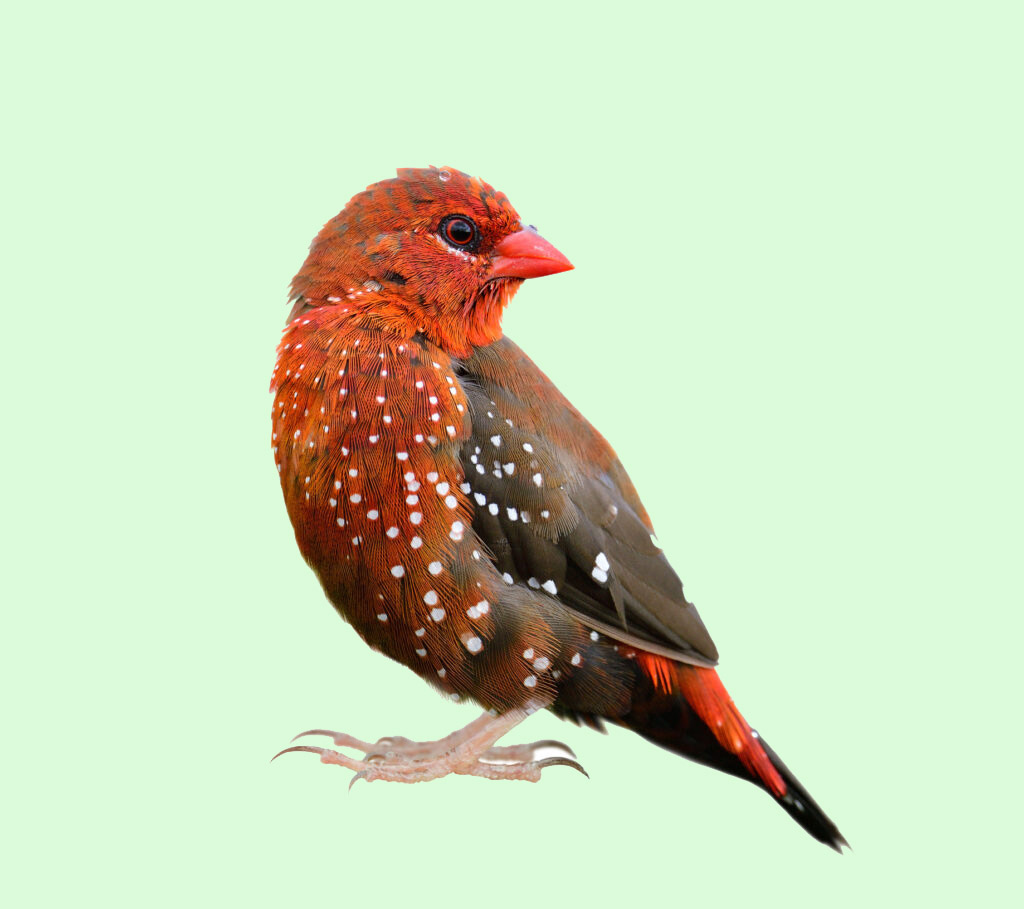
Diet and Nutrition
Their diet plays a significant role in determining the lifespan of Strawberry Finches. Providing them with a balanced and nutritious diet is essential for their overall health and longevity. These birds thrive on a diet consisting of high-quality seeds, fresh fruits, and vegetables. Offering a variety of foods rich in vitamins and minerals is vital for supporting their immune system and maintaining their well-being.
Proper Care and Maintenance
Giving your Strawberry Finches proper care and maintenance is vital for their long and healthy life. Regular check-ups with an avian veterinarian, routine grooming, and maintaining a clean living space are all crucial factors in promoting their well-being and increasing their lifespan. Additionally, ensuring they have access to fresh and clean water at all times is essential to their overall health.
Environmental Conditions
The environment in which Strawberry Finches are kept can significantly impact their lifespan. Providing them with a spacious and well-ventilated cage, away from direct sunlight and drafts, is essential. It’s also important to maintain appropriate temperatures and humidity levels to ensure their comfort and well-being. Stressors such as loud noises or sudden changes in their environment should be minimized to promote a peaceful and stress-free habitat.
In conclusion, understanding the average lifespan of Strawberry Finches and the factors that influence it is crucial for providing them with optimal care. By offering a balanced diet, proper care and maintenance, and a conducive environment, you can help these vibrant birds live a long and healthy life.
Health and Common Issues in Strawberry Finches
It is important to be aware of common health issues that can affect Strawberry Finches to ensure their well-being. By understanding these issues and learning how to identify signs of illness, you can take timely steps to address their health concerns.
Respiratory Problems
Strawberry Finches are susceptible to respiratory problems, which can be caused by factors such as poor ventilation, dust, and exposure to drafts. Keep their habitat clean and well-ventilated to minimize the risk of respiratory issues. If you notice any signs of respiratory distress, such as wheezing, difficulty breathing, or discharge from the nostrils, seek veterinary attention promptly.
Mites
Mites are tiny parasites that can infest Strawberry Finches and cause skin irritation and discomfort. Regularly inspect your finches for signs of mite infestation, such as excessive scratching, feather loss, or irritated skin. If you suspect mites, consult a veterinarian for appropriate treatment options to eliminate these pesky parasites.
Nutritional Deficiencies
Proper nutrition is essential for the health of Strawberry Finches. However, these birds can be prone to nutritional deficiencies if their diet is not well-balanced. Ensure they receive a varied diet that includes high-quality seeds, fresh fruits, and vegetables. Lack of essential nutrients can lead to problems such as low immunity, feather abnormalities, and reproductive issues.

“Regularly inspect your finches for signs of mite infestation, such as excessive scratching, feather loss, or irritated skin.”
Regular check-ups with a veterinarian experienced in avian care are crucial for maintaining the health of your Strawberry Finches. They can provide advice on diet, preventative care, and identify any health issues early on. By staying attentive to their well-being, you can enjoy the beauty and companionship of these delightful birds for years to come.
| Common Health Issues | Signs and Symptoms | Prevention and Treatment |
|---|---|---|
| Respiratory Problems | Wheezing, difficulty breathing, discharge from nostrils | Maintain proper ventilation, clean habitat, seek veterinary attention |
| Mites | Excessive scratching, feather loss, irritated skin | Regularly inspect finches, consult veterinarian for treatment |
| Nutritional Deficiencies | Low immunity, feather abnormalities, reproductive issues | Provide a varied diet and consult veterinarian for guidance |
Conclusion
In conclusion, caring for and breeding Strawberry Finches can be a fulfilling and enjoyable endeavor for bird enthusiasts. These captivating avian companions, renowned for their vibrant colors and unique behaviors, can bring beauty and charm to any home or aviary.
To ensure the well-being of your Strawberry Finches, it is crucial to understand their specific needs and provide a suitable habitat. This includes setting up an appropriately sized cage with perches and environmental enrichment to promote their natural behaviors.
Proper care is essential for the health of Strawberry Finches. Maintain their well-being by following a balanced diet that includes a mix of seeds, fruits, and vegetables. Regular grooming and cleaning of their living space are also crucial to prevent potential health issues.
Lastly, remember to prioritize the health of your Strawberry Finches by scheduling regular veterinary check-ups. This will help to identify any potential health problems early on and ensure timely treatment.
FAQ
What is the average lifespan of a Strawberry Finch?
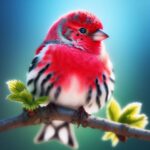
The average lifespan of a Strawberry Finch is around 5 to 7 years in captivity.
What do Strawberry Finches eat?
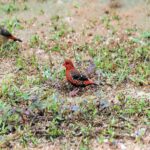
Strawberry Finches have a diet primarily consisting of various seeds, including millet, canary grass seeds, and small fruits like strawberries and blueberries. It is important to provide a well-balanced diet with a variety of nutrients.
Can Strawberry Finches be kept as pets?
Yes, Strawberry Finches can be kept as pets. They are small, colorful, and relatively easy to care for. However, they require a spacious cage, regular exercise, and social interaction.
How should I set up the habitat for my Strawberry Finch?
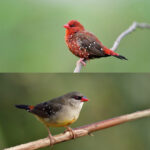
The habitat for your Strawberry Finch should include a cage that is large enough for them to fly and move around comfortably. Provide perches of various sizes and materials, and include toys and environmental enrichment to keep them mentally stimulated.
Can Strawberry Finches breed in captivity?
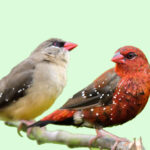
Yes, Strawberry Finches can breed in captivity. To encourage successful breeding, ensure they have a suitable nesting site, a balanced diet, and a calm environment. It is important to monitor the breeding process and provide any necessary support.
What are some interesting facts about Strawberry Finches?
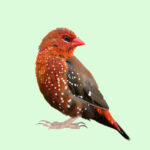
Strawberry Finches are native to the grassland habitats of Asia and are known for their vibrant red plumage. They are social birds and often form small flocks. Interestingly, males have a sweet song that they use to attract females during courtship.
What are common health issues in Strawberry Finches?
Common health issues in Strawberry Finches include respiratory problems, mites, and nutritional deficiencies. Regular veterinary check-ups and maintaining a clean and well-balanced environment will help prevent these health issues.
How can I determine the gender of my Strawberry Finch?
Determining the gender of a Strawberry Finch can be challenging without genetic testing or the observation of specific behaviors during the breeding season. The males usually have brighter plumage and may sing more frequently.






